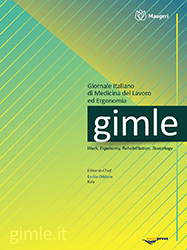[THE RISK OF SECOND RADIATION-INDUCED CANCER FROM HADRONTHERAPY VERSUS CONVENTIONAL RADIOTHERAPY]
All claims expressed in this article are solely those of the authors and do not necessarily represent those of their affiliated organizations, or those of the publisher, the editors and the reviewers. Any product that may be evaluated in this article or claim that may be made by its manufacturer is not guaranteed or endorsed by the publisher.
Authors
Radiation therapy increasingly plays a fundamental role in the treatment of cancer. Since the survival of cancer patients is continuously improving, the late effects of treatments, including those related to radiation treatment, can affect the quality of life and health and of the patients themselves to a greater extent. Especially in the last 20 years, with the implementation of new techniques/forms of radiation therapy, the risk of developing radiation-induced tumors following radiation therapy has become a hotly debated topic. Malignant tumors induced by radiation therapy represent a particularly important problem for pediatric patients, who are intrinsically more sensitive to carcinogens than adults and have a longer life expectancy. To date, there is only one study in the literature, from 2019, which analyzes the risk of secondary tumors after carbon ion radiation compared to surgery or photon treatment and refers to patients treated for prostate cancer. Despite the high degree of uncertainty, the data acquired so far suggest that particle radiation therapy, especially with protons delivered with active scanning, carries a lower risk of G Ital Med Lav Erg 2020; 42:4 radiation-induced tumors than conventional photon therapies. This is largely due to the lower doses to which healthy tissues are exposed and the low relative risk associated with exposure to neutrons throughout the body, especially when active scanning beams are used.
How to Cite

This work is licensed under a Creative Commons Attribution-NonCommercial 4.0 International License.
PAGEPress has chosen to apply the Creative Commons Attribution NonCommercial 4.0 International License (CC BY-NC 4.0) to all manuscripts to be published.






